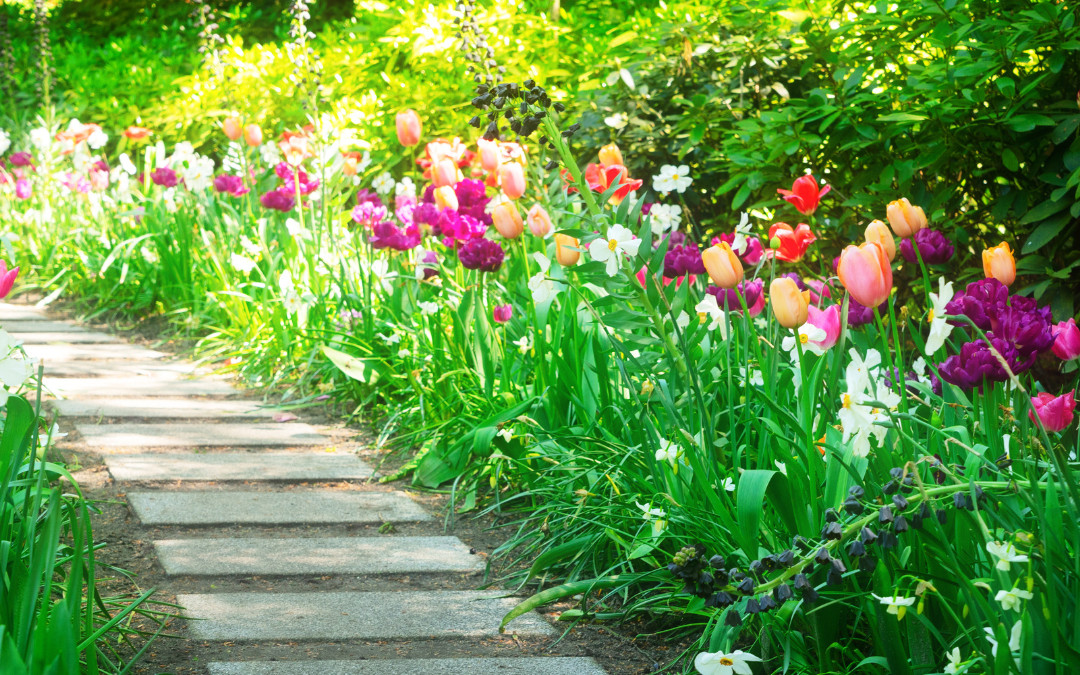As the old saying goes, April showers bring May flowers – hoping that those blessed with snow showers can also enjoy the same luck! Even though the weather may not seem like it’s warming up, let’s focus on the actions we can take now so that when it does eventually get warmer, we’re ready to seize all the sunny days. If you want to achieve more with your May garden, we’ve got the solution for you! We’ve put together a handy list of activities that should keep you busy and bring out the best in your May garden!
Plants

-
Once the spring-flowering heather has finished blooming, it should be lightly pruned for an optimal result.
-
Make it a habit to routinely keep a lookout on your space for pests. Taking care of the pest-related problems at an early stage is much more effective in controlling them.
-
After flowering, deadhead spring flowering bulbs like tulips, daffodils and hyacinths to preserve their energy for next year.
-
Plant summer flowering bulbs such as dahlia, begonias, calla lilies, canna lilies, gladiolus and lilies in frost-free areas like containers, beds and borders.
-
Harvest cool-season vegetables; kale, cabbage, parsnip and spinach.
-
Plant warm-season vegetables/fruit; onions, cucumbers, tomatoes, raspberries, strawberries, blueberries, currants & more!
-
It is essential to maintain your vegetable garden consistently to ensure the soil is loose and oxygen circulation reaches the roots. This helps keep your plants healthy and vigorous.
-
Before you start planting, ensure that the weather has sufficiently heated up and remains this way before planting celosia, impatients, zinnias, fuchsias or heliotrope.
-
Following a proper fertilizing regime can help to prevent issues such as black spots and powdery mildew from affecting roses. This is critical for ensuring the health and longevity of these plants.
-
Winter is the ideal season to prune fruit trees and shrubs, but if you missed the opportunity, now is still a great time to get it done. Make sure you take care of your trees before new growth starts appearing.
Pond, Lawn & Birds

-
Begin providing food for your fish once the temperature has exceeded 5-8 degrees. Additionally, it’s crucial to only give them an amount that can be consumed in a span of five minutes.
-
May is the perfect time to lay down new lawns, as the weather conditions are ideal for successful sowing.
-
Give your lawn the best start by using seed and sod starters. These will provide the foundation needed to get a lush, green lawn quickly and easily.
-
In order to promote healthy growth and blooms, start to fertilize water lilies and lotuses regularly.
-
As soon as the weather gets warmer, make sure to fill birdbaths. Filling birdbaths is an easy and inexpensive way to bring nature into your home, making it an ideal solution for everyone who enjoys watching wildlife.
Miscellaneous & More!

-
Make sure to check out the wide selection of flowering plants available. Grab your favourite blooms and don’t forget the fertilizer; it is essential for feeding them every 10 days if you want a beautiful summer full of bright blooms.
-
As the temperatures increase, it is important to watch out for rapid growth and spread of weeds. Be vigilant in keeping this in check.
-
Frequently mix your compost and check if it’s finished. If it is, you can apply it to your garden right away.
-
Mulching is a great way to conserve moisture and keep weeds at bay during the summer months. All you need is grass clippings, bark, pine needles, straw etc. to mulch your garden or flower beds. Plus, it’s an easy and cost-effective solution!
-
It is recommended to shear the spring-flowering heather lightly once it has completed flowering.
-
Take the time this Spring to review your garden tools and decide which ones you should keep and which should be replaced. If they are in good condition, it may be a good idea to sharpen them as well. Doing this now will ensure they will last through another gardening season.
-
It’s important to take a look at your patio and see if any maintenance is required. Inspect the condition of the area and if necessary, take action to ensure it is in its best condition.
Looking for more to do? Check out this episode of Get Up and Grow with our president, Gord Nickel to learn how to grow your own Kiwi’s below!


